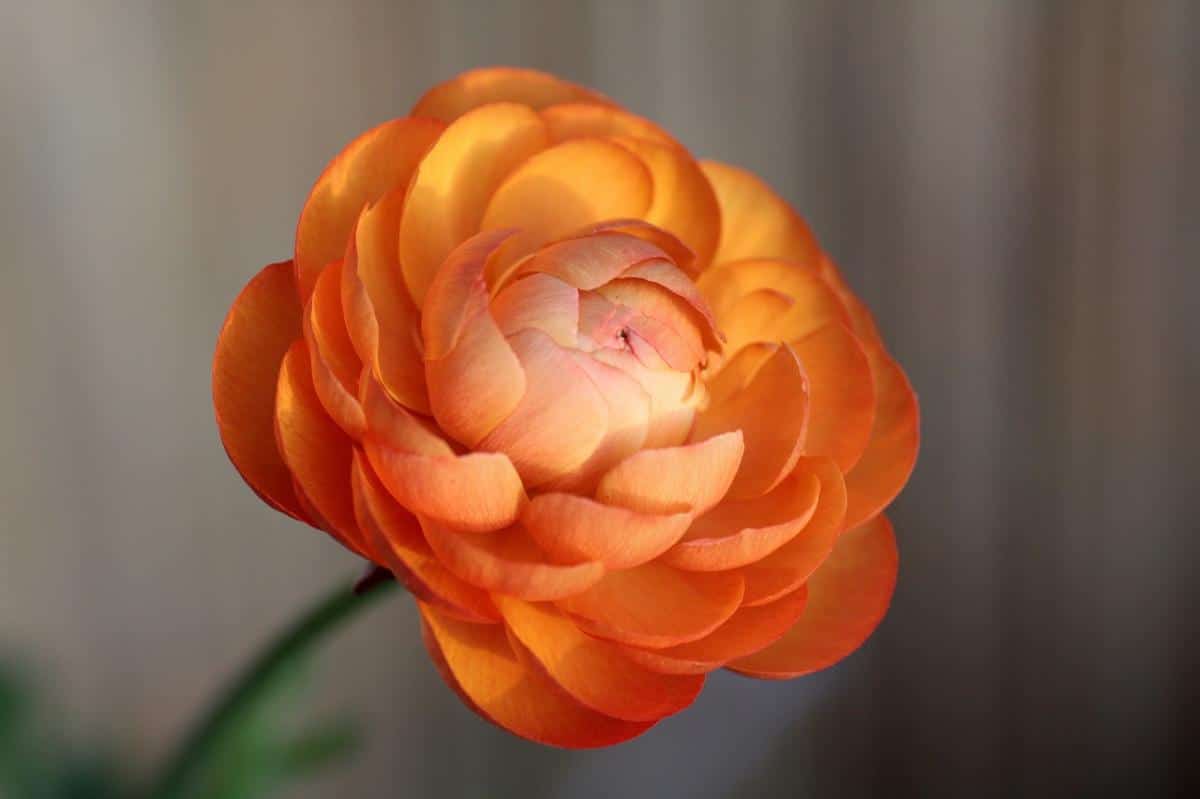
Ranunculus are herbaceous plants that generally produce very pretty flowers during the spring season. Its life cycle can be more or less long depending on the species in question, since there are some that are annual, that is, they live one year, others biennial (two years), and the most common that are perennial.
For this reason, when you want to make a composition, especially if you are going to do it in the garden, It is recommended that you know the different types of Ranunculus so there are no surprises.
Ranunculus selection
The gender Ranunculus It is made up of 400 species distributed throughout the globe. Talking about all of them in an article would be impossible, so we are going to show you the most popular ones:
Ranunculus acris

If you are looking for a perennial species that gives yellow flowers, this is the one for you. It is known as buttercup or belida grass, and it is native to temperate Eurasia. Reaches a height of 30 to 70 centimeters, and has a thick root from which various stems with leaves sprout every year, as well as, of course, the flowers. In winter it remains at rest.
ranunculus arvensis

This is a type of annual buttercup, that is, in a few months it germinates, grows, blooms, gives seeds and dies. It is native to much of the Northern Hemisphere, practically all of Saudi Arabia, and North Africa. Its maximum height is 60 centimeters, and the minimum 20 centimeters. The flowers are also yellow, and they bloom in spring or early summer.
Ranunculus aquatilis

Image - Wikimedia / Hans Hillewaert
As its name suggests, it is the aquatic buttercup. It is so named because it grows wild in the rivers and streams of North America, Northwest Africa and Europe. It is a normally annual plant, very beautiful, that has floating stems and flowers with white petals with a yellow center. Its height varies, but does not usually exceed 20 centimeters. It is perfect to have in freshwater ponds.
Ranunculus asiaticus

Image - Wikimedia / Krzysztof Ziarnek, Kenraiz
It is, without a doubt, the most popular species. It is known as francesilla or marimoña, and it is a perennial herbaceous plant with tuberous roots native to the eastern Mediterranean region that reaches a height of 30-35 centimeters. During the winter it rests, but in the spring its stems and leaves sprout, as well as its flowers that are very bright colors, such as red, pink, white, orange or yellow.
Get your plant by clicking here.
Ranunculus bulbosus

This is the bulbous buttercup, also known as hairy grass, which grows wild in Europe. It is perennial, reaching a height of 20 to 60 centimeters. The base of the stems are swollen, and they are also shaped like a bulb, which is the only thing together with the roots that remains alive after flowering. These flowers are yellow.
Ranunculus would be

El Ranunculus would be it is one of the smallest species. Known as lesser celandine, it is a perennial plant with tuberous roots native to Europe that reaches a size of 15-20 centimeters in height. Like the rest of perennial buttercups, after blooming its stems die, until the next season. The flowers are yellow, blooming from late winter to early to mid-spring.
Ranunculus inundatus

Image - Wikimedia / Harry Rose
This is another perennial buttercup ideal to have in freshwater ponds or aquariums and with an average temperature of between 18 and 28 degrees Celsius. Its popular name is river buttercup, and it is native to eastern Australia. Reaches a height of 5 to 10 centimeters, and produces yellow flowers.
A creeping frog

Image - Wikimedia / Aiwok
It is known as gold button, bougainvillea, meadow buttercup and redellobas, and it is a perennial herb with a creeping habit native to Europe and the Pacific Northwest. Its maximum height is about 30 centimeters, and produces yellow flowers. It is a very interesting option to grow in the garden, although it will also occur in pots or planters.
Ranunculus trichophyllus

Image - Wikimedia / Krzysztof Ziarnek, Kenraiz
El Ranunculus trichophyllus It is an aquatic or riverbank plant native to Europe. Grows to a height of 30-35 centimeters, and produces white flowers in spring.
General care of Ranunculus
Finally, if you want to know how to take care of them, take note of our advice:
- Location: they are plants that need to be in full sun, or at least in semi-shade. They grow very well in the shelter of trees, provided they receive a few hours of light.
- Earth:
- Garden: the soil must be rich in nutrients, and well drained. They do well in clay, but it is advisable to mix the soil with perlite in equal parts if they do not drain the water well to prevent the roots from rotting.
- Flowerpot: fill with universal substrate, but yes, it must be of quality, such as that of the Flower or Fertiberia brand. You can get it here. The pot must have holes in its base.
- Irrigation: the frequency of watering will be moderate. In principle, one or two irrigations a week will suffice.
- Subscriber: it is interesting to fertilize the different types of ranunculus with a fertilizer for flowering plants (for sale here), as they can be very useful. If you prefer, use a natural one such as guano (for sale here).
- Multiplication: they multiply by seeds, and by division of roots in spring or summer.

Which of these types of Ranunculus did you like the most?